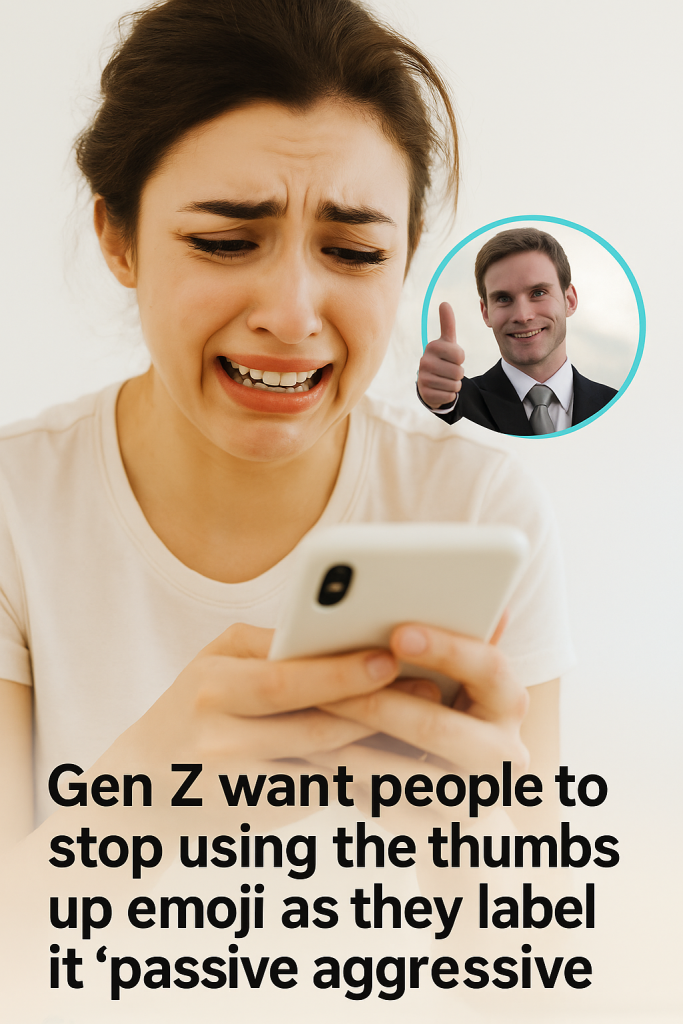In the ever-evolving landscape of digital communication, even the most innocuous symbols can take on new meanings. The humble thumbs-up emoji 👍, once universally seen as a positive affirmation or simple acknowledgment, has come under scrutiny—especially among younger users. Gen Z, in particular, is increasingly describing the emoji as passive-aggressive and downright “unsettling”.
The controversy gained traction after a Reddit user sparked a conversation by calling the thumbs-up emoji “weirdly aggressive.” Since then, thousands of comments have flooded in from Gen Z members sharing their own experiences and interpretations. What was originally intended as a friendly gesture, they say, has morphed into a digital equivalent of a cold shoulder or reluctant approval.
One common explanation is context: many Gen Z users report receiving the thumbs-up emoji in conversations where they expected more warmth or elaboration, turning the emoji’s brevity into a curt or dismissive message. Instead of feeling acknowledged, recipients often perceive it as a minimal-effort response, especially in emotionally charged or prolonged discussions.
“It feels like when someone agrees with you but doesn’t actually want to engage,” remarked one Reddit commenter. “Like they’re forcing politeness but really want you to stop talking.” This perceived underlying tone has led the thumbs-up emoji to be linked with passive aggression—a subtle, indirect expression of hostility that contradicts the emoji’s original friendly intent.
Experts in digital communication note that emojis are highly reliant on generational contexts and cultural nuances. For older generations who grew up in early mobile messaging eras, the thumbs-up still signifies straightforward approval or encouragement. However, for Gen Z—the first generation to grow up fully immersed in social media and visual communication—the meaning of emojis is much more fluid and often tied to social cues about tone and intent.
Social psychology suggests this shift reflects broader generational communication styles. Gen Z tends to prioritize nuance and emotional transparency, which can make the bluntness or ambiguity of the thumbs-up feel off-putting or even “unsettling.” In contrast, the emoji’s simplicity fails to convey the emotional depth expected in modern online conversations within this demographic.
This emerging trend highlights how digital symbols are never fixed in meaning. A single emoji can mean vastly different things depending on who’s interpreting it and in what setting. Communication experts caution against taking these perceptions lightly, as misunderstandings rooted in emoji use can escalate real-life tensions or misunderstandings.
Interestingly, some Gen Z users are advocating for completely eliminating the thumbs-up emoji from their texting repertoire or replacing it with alternatives perceived as warmer or more sincere—like the folded hands emoji 🙏 or even a simple text reply such as “Got it” or “Thanks!”
Despite the criticism, the thumbs-up emoji remains widely used across all age groups worldwide, often still representing positivity, agreement, or approval. Whether the emoji’s reputation will permanently shift among Gen Z remains to be seen. For now, the thumbs-up serves as a reminder that even small digital gestures carry complicated social weight in the age of instant messaging.
So next time you’re about to send that thumbs-up emoji, consider your audience: what feels friendly and simple to you might come across as passive-aggressive or cold to someone else—especially if they’re part of Gen Z.
Would you still use the thumbs-up emoji knowing this? Or has it lost its charm in the eyes of younger generations?



